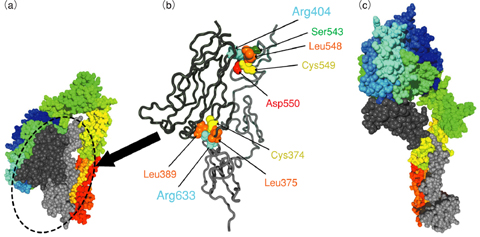
Fig.12-6 (a) and (b) X-ray crystal structure of integrin αVβ3; (c) computer model of the extended conformation
Cells in multicellular organisms such as humans are usually not in isolation, but they are bound to each other directly or indirectly through an extracellular matrix. In this binding, cell adhesion proteins, which exist on the cell surface, are involved. Integrin is a type of cell adhesion protein, and a variety of integrins with different functions and structures have been identified.
Some kinds of integrins are known to be normally in an inactive state changing to an active state only when necessary. Integrin αIIbβ3, which exists abundantly on the cell surface of a blood platelet, is one of them. When we bleed, this integrin changes to an active state to promote the platelet aggregation and stop the bleeding. Large-scale conformational changes of integrin (Fig.12-6 (a),(c)) are considered to be involved in this activation.
We made computer simulations to study the mechanism of the large-scale conformational change of integrin αVβ3, which is similar to integrin αIIbβ3 and whose structure was determined by X-ray crystal structure analysis at the atomic level. Among ~1500 amino-acid residues which constitute the protein, we found that two amino-acid residues play important roles in the conformational change (Arg633 and Arg404 in Fig.12-6 (b)). That is, we found that the conformational change occurs more easily if the interactions of these amino-acid residues with nearby residues are eliminated in the simulations. This computational result suggests that these amino-acid residues work as switches for the conformational change. The residues had not been recognized as important, but experiments performed by our co-worker demonstrated that the mutation of these residues activates integrin, thereby verifying our simulation results.
Heart attacks and strokes, which are the major causes of death for Japanese people, are caused by the formation of the blood clot at undesirable locations in the body. For the development of a cure for these deceases, many researchers are focusing on integrin, which is involved in the formation of the blood clot. Our discovery about this protein will be helpful in advancing this development.